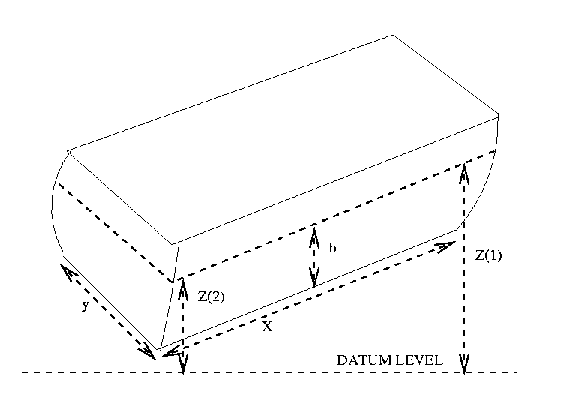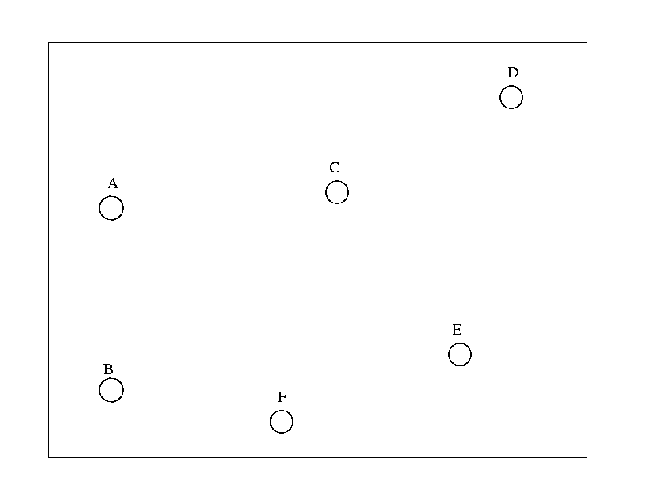Introduction to Hydrology (Geog 3511)
Fall 2012
Assignment 7: GROUNDWATER
| Section | Lab | Assigned | Due |
| 012, 013 | Tuesday | Tuesday, Oct 23 |
Friday, Oct 26 |
| 011 | Thursday | Thursday, Oct 25 | Monday, Oct 29 |
40 possible points.
SHOW ALL YOUR WORK.
CITE SOURCES OF EQUATIONS USED.
WRITE THE QUESTION AT THE START OF EACH ANSWER.
TYPE YOUR LAB UP
Q1) Calculate the vertical flow rate (Q) using Darcy's Law for the following sandstone block. (3 points)
A equals 1.5 m x 1.5 m
the change in elevation is ( ![]()
![]() )
is
)
is ![]()
![]()
![]()
![]() is
is
![]()
![]()
![]()
![]() is
is
![]()
![]()
![]()
![]() is
is
![]()
![]() day
day
Q2) Calculate the flow rate (Q) using Darcy's Law for a
silt block. All parameters are the same except that ![]()
![]() for
silt is
for
silt is ![]()
![]()
![]()
![]() day.
(3 points)
day.
(3 points)
Q3) Over a 24-hr period, how much more water moves through the sandstone block compared to the silt block? (2 points)
Q4) Which of these formations would be considered an aquifer and which an aquiclude? Why? (2 points)
Given the following unconfined aquifer system:
The average width ( ![]()
![]() ) is
) is
![]()
![]() km
km
The length ( ![]()
![]() ) is
) is
![]()
![]() km
km
The average thickness ( ![]()
![]() ) is
) is
![]()
![]() m
m
Hydraulic conductivity ( ![]()
![]() ) is
) is
![]()
![]() m/day
m/day
The elevation at point 1 ( ![]()
![]() )
is
)
is ![]()
![]() m
m
The elevation at point 2 ( ![]()
![]() )
is
)
is ![]()
![]() m
m

Q5) Calculate the horizontal flow rate ( ![]()
![]() )
using Darcy's Law. The following image is a schematic of an unconfined
aquifer from the San Luis Valley in Colorado. Which way is the water
flowing and why?
)
using Darcy's Law. The following image is a schematic of an unconfined
aquifer from the San Luis Valley in Colorado. Which way is the water
flowing and why?
Be sure to show all formulas and the calculations for each parameter in the formulas. (3 points)
Q6) What is the transmissivity of the aquifer in Q5? (2 points)
Q7) Two piezometers are installed in the unconfined
aquifer. Calculate the hydraulic gradient using the data from
piezometers A and B. Which way is the water flowing? Use ![]()
![]() from Q5. How would you use this information to calculate specific discharge? (4 points)
from Q5. How would you use this information to calculate specific discharge? (4 points)
Piezometer A, land surface is 450 m above the datum, depth to water is 75 m.
Piezometer B, land surface is 450 m above the datum, depth to water is 150 m.
The distance between A and B is 300 m.
Following is an image of a plan view of a field of piezometers. Hydraulic heads at each of the wells are as follows:
A = 375 m
B = 300 m
C = 375 m
D = 400 m
E = 375 m
F = 300 m

Print out the image.
Q8) Add the values for hydraulic head to each of the wells
Q9) Draw equipotential lines at 300 m, 375 m, and 400 m. Use solid lines.
Q10) Draw three flowlines perpendicular to the equipotential lines, using dashed lines. One line should be to the left of C, one line should be between C and E, and one line should be to the right of the E.
Q11) On each flow, add an arrow indicating direction of flow.
Lets apply our new understanding of groundwater flow to investigate a general assumption that groundwater losses from a catchment are negligible. We'll use some data from Nel Caine's research on the Martinelli catchment on Niwot Ridge. The Martinelli catchment is a small (8-ha) alpine basin with colluvium deposits at the basin outlet where the gaging station is located.
Data available:
a) Two wells located 10 m apart, in a line perpendicular to the stream.
b) The water table is 5 m lower at the well closest to the stream than at the well further away from the stream.
c) The saturated thickness of the colluvium deposit is 3 m.
d) The length (along the stream) of the colluvium deposit is 20 m.
e) Saturated hydraulic conductivity is 0.15 m/day.
f) Stream discharge ( ![]()
![]() )
was 25 m
)
was 25 m ![]()
![]() on
21 August 1986.
on
21 August 1986.
Q12) What is the hydraulic gradient in the horizontal direction? (2 points)
Q13) What is the transmissivity? (2 points)
Q14) What is the volume of groundwater discharged for 21 August 1986 in cubic meters? (3 points)
Q15) What is the ratio of groundwater discharge to stream discharge for that day? (2 points)
Q16) In the simplified hydraulic equation (drats, vertical
learning), ![]()
![]() and the groundwater component (
and the groundwater component ( ![]()
![]() or
or
![]()
![]() )
is ignored. Is that assumption valid here? Why or why not? (2 points)
)
is ignored. Is that assumption valid here? Why or why not? (2 points)